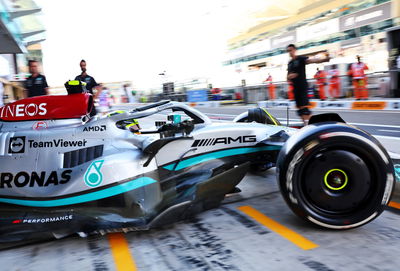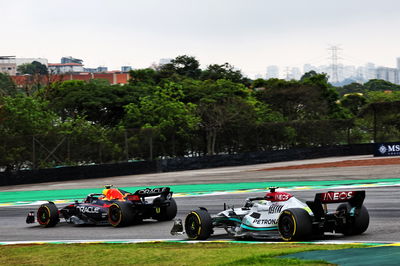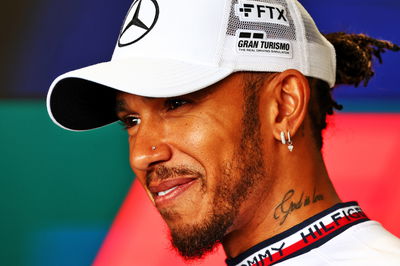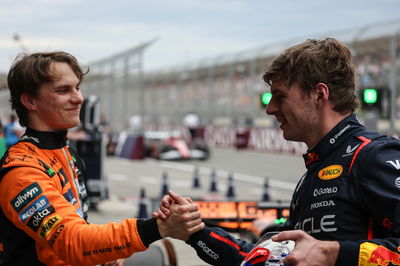Mercedes ‘surprised’ no other team found F1 2022 concept loophole

Following a major overhaul to F1’s aerodynamic regulations, Mercedes shocked the paddock by going completely down their own route and adopting a ‘zero sidepod’ solution that differed greatly to Red Bull and Ferrari’s designs.
Mercedes went on to endure a difficult season with their troubled W13 challenger, winning just one race as they slipped to third place in the F1 constructors’ standings after an unprecedented streak of eight consecutive world titles.
Speaking in a recent interview with Auto Motor und Sport, Mercedes technical director Mike Elliott was asked if the team were surprised there were the only ones to favour their sidepod concept.
“Not really,” Elliott responded. "We were surprised that no one else found this loophole. When you’ve gone down this path, it’s very hard to copy anything else.”
While Mercedes’ solution to the championship’s new regulations did not work, the team have maintained belief in their unique sidepods.
At the end of last season, Mercedes team boss Toto Wolff hinted the ‘DNA’ of the car could change for 2023 but stressed that “doesn’t necessarily mean that the bodywork is going to look very different”.
However, the latest reports point towards Mercedes moving towards a middle ground between their sidepod concept and the philosophy adopted by Red Bull for the W14.

“We only have a partial view of things,” Elliott explained. “We only see what our car does. It’s difficult to judge how the other concepts react.
“We’ve been trying to understand the issues and get into a position to predict the performance variations from track to track.
“It has nothing to do with the shape of the sidepods, but more to do with how we designed the car and what our goals were.”
The performance of the W13 was largely hampered by extreme porpoising and bouncing during the early stages of 2022 but Mercedes are confident they have found a solution to avoid a repeat of the issues next season.
“At the beginning of the season we had to deal with aerodynamically generated bouncing like everyone else,” Elliott said. “That masked the real problems of the car.
“With our upgrade in Barcelona, we got rid of most of the aero bounce. The bouncing that was still there at the end was caused by bumps. It’s inherent in these cars that are just above the road.
“At first we couldn’t explain why it always looked different from track to track. Later, our predictions became more accurate. Our simulations gave us a pretty accurate indication of which track would be good or bad for us.
“We now also have a good theory of what we need to do so that this doesn’t happen to us again next season. That gives us confidence over the winter. But in Formula 1, unfortunately, you never know everything.”
Lewis Hamilton will be aiming to bounce back from statistically his worst F1 season by winning a record-breaking eighth world title in 2023, while teammate George Russell seeks his first.












